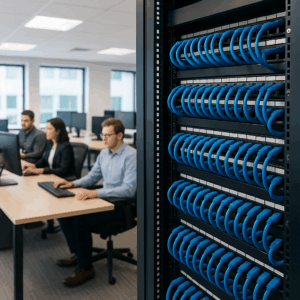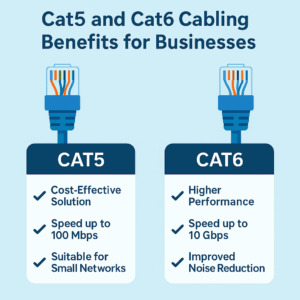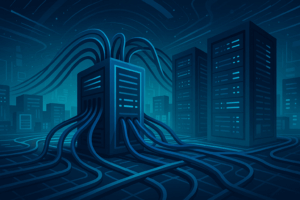Why Structured Cabling (Cat5/Cat6) Remains Essential in 2025
- Phone: +1(833)PHX-Geek
- 712 H St NE Suite 1904 Washington, D.C. 20002
Take a look at our camera system. Get remote access to your cameras, and monitor your restaurant while you are away. Great protection for you from theft, employee grift and wrongful lawsuits.
Introduction
As technology continues to evolve, one might wonder whether traditional solutions like structured cabling still hold value. However, as we step into 2025, Cat5 and Cat6 cabling remain crucial components in network infrastructure. These cables are not just relics of the past; they serve as the backbone for many modern digital communications. Their reliability and performance capabilities make them indispensable in various settings, from homes to large enterprises, ensuring smooth data transmission. 
The importance of structured cabling lies in its ability to support high-speed data transfer while providing scalability. As data demands increase, organizations need robust systems that can handle higher bandwidths efficiently. Cat6 cabling, in particular, offers significant advantages over its predecessor, with improved performance and reduced interference. This means businesses can continue to rely on these cabling solutions for their day-to-day operations.
Moreover, structured cabling simplifies network management. With a well-planned cabling infrastructure, troubleshooting becomes easier, and the risk of network downtime diminishes. As companies strive for efficiency and reliability, the continued relevance of structured cabling becomes increasingly clear.
In 2025, businesses are still reaping the benefits of Cat5 and Cat6 cabling. One of the primary advantages is cost-effectiveness. While fiber optics are gaining popularity, the initial investment can be prohibitive for many organizations. Cat5 and Cat6 cables provide a more affordable yet efficient alternative, especially for smaller businesses that require high-speed internet without breaking the bank.
Furthermore, Cat6 cabling offers superior performance, particularly in environments where data-heavy applications are commonplace. With the ability to support gigabit Ethernet and higher data rates, businesses can ensure that their networks run smoothly. This capability is crucial for activities such as video conferencing, cloud applications, and online gaming, which demand high bandwidth.
Additionally, structured cabling systems are designed for longevity. Once installed correctly, they can last for years with minimal maintenance. This durability makes them a reliable choice for businesses planning for the future while managing current needs effectively.
 To maximize the effectiveness of structured cabling, implementation must be approached strategically. First, conducting a thorough needs assessment is essential. This process involves understanding current and future data requirements, helping to determine the appropriate cabling solutions and configurations. By doing so, businesses can avoid costly upgrades down the line.
To maximize the effectiveness of structured cabling, implementation must be approached strategically. First, conducting a thorough needs assessment is essential. This process involves understanding current and future data requirements, helping to determine the appropriate cabling solutions and configurations. By doing so, businesses can avoid costly upgrades down the line.
Secondly, hiring a certified professional for installation is critical. Proper installation ensures that cables are laid out according to industry standards, reducing the risk of interference and maximizing performance. A skilled technician will also be able to identify potential challenges and offer solutions during the installation process.
Finally, regular maintenance and testing of the cabling system are vital for ensuring ongoing performance. Businesses should schedule routine inspections to identify any issues early on. By staying proactive, organizations can prevent downtime and ensure that their network remains robust and reliable.
As we advance into an increasingly tech-driven age, future-proofing your network infrastructure is paramount. One effective strategy is to choose cabling that can accommodate future technologies. While Cat5 and Cat6 are still relevant today, understanding the advantages of emerging technologies can help organizations prepare for what's next.
Additionally, building a flexible cabling system allows for easy upgrades. By implementing a structured cabling system that can evolve with technology, companies mitigate the risks associated with rapid technological changes. This adaptability is essential for maintaining a competitive edge in today’s fast-paced business environment.
In conclusion, structured cabling, particularly Cat5 and Cat6, continues to play a significant role in modern networking. By investing in reliable cabling solutions and following best practices, businesses can ensure that they are well-equipped for the future.
Conclusion
In summary, structured cabling remains a cornerstone of effective network infrastructure in 2025. Its benefits—cost-effectiveness, reliability, and scalability—make it an attractive choice for organizations of all sizes. By understanding the importance of proper installation and maintenance, businesses can harness the power of structured cabling to support their growth and technology needs.